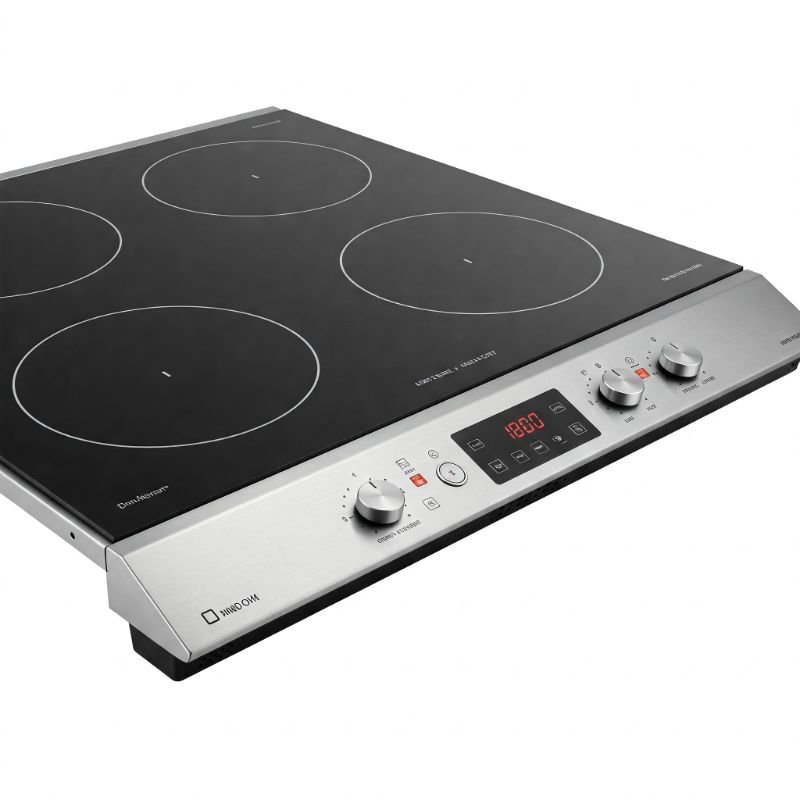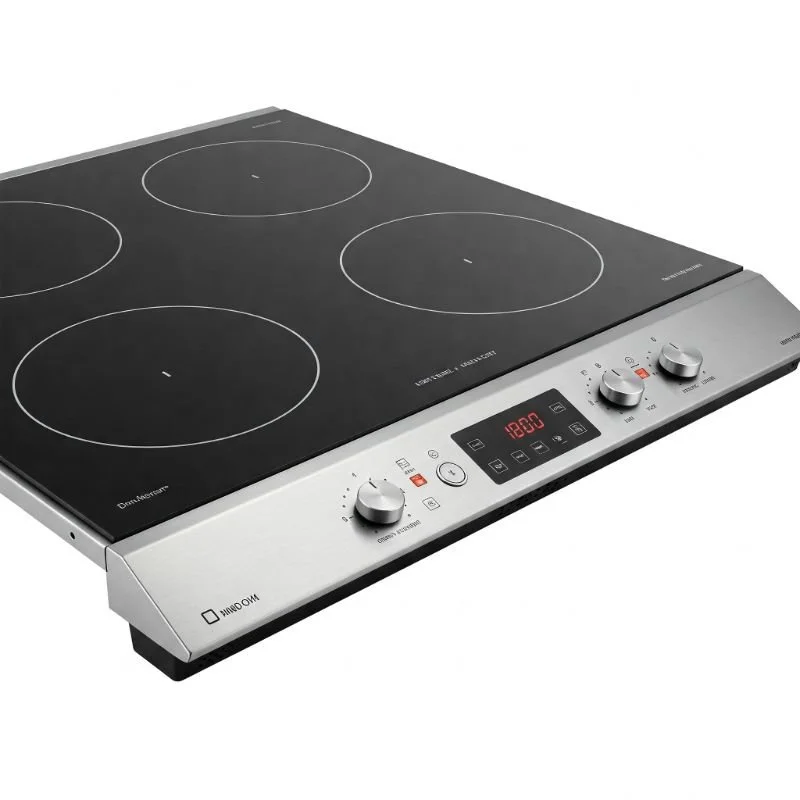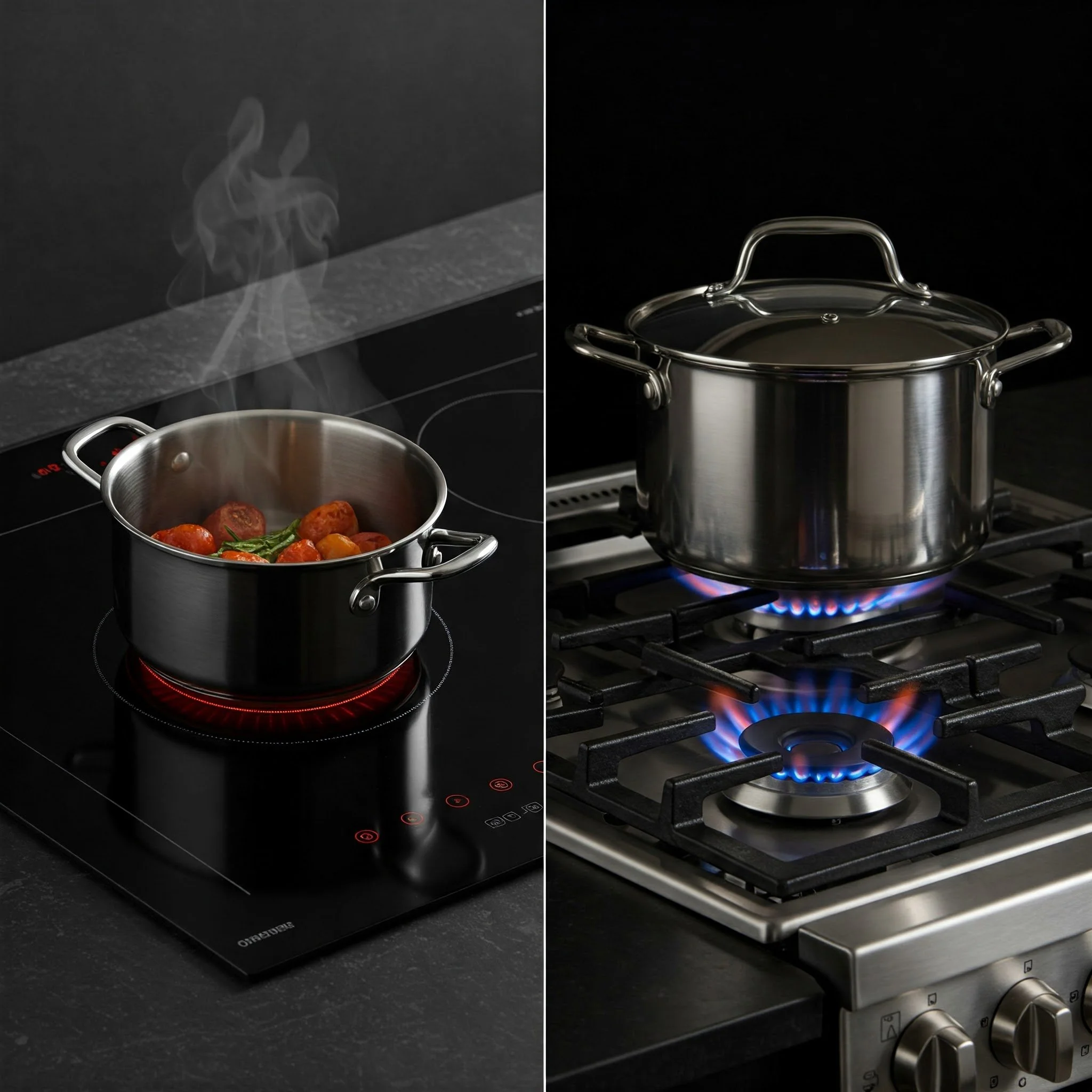What Is an Induction Cooktop? Explained
What is an induction cooktop? Explained in plain English with everything you need to know—how it works, pros and cons, must-know features, and whether it’s worth switching from gas or electric. Let's demystify your next kitchen upgrade.
Ever found yourself staring at a sleek, glassy stovetop and wondering, “Wait… how does that thing even work?” Well, you’re not alone. Induction cooktops might look like something out of a sci-fi kitchen, but they’re very real—and very efficient.
So today, we’re diving into the burning question: What is an Induction Cooktop? Explained in a way that doesn’t require an engineering degree. If you're thinking about upgrading your kitchen, replacing an old stove, or just curious about all the buzz around induction, stick around. We're about to uncover why this cooking tech has foodies and busy home chefs alike totally hooked.
What Is an Induction Cooktop? Explained Simply
Let’s cut to the chase—an induction cooktop uses electromagnetic energy to directly heat your pots and pans. Yep, no open flame, no red-hot coils, no waiting an eternity for water to boil. Just pure, precise, lightning-fast heat.
Wait… How Does That Even Work?
Great question. Here's the magic trick:
Beneath the smooth ceramic surface of an induction cooktop lies a copper coil.
When turned on, this coil creates a magnetic field.
The moment you place a ferrous (magnetic) pan on the cooktop, that field causes the iron in the pan to vibrate like crazy.
Those vibrations = heat generated directly in the pan itself.
Mind-blowing, right? The cooktop itself stays relatively cool to the touch—only the pan and what’s inside it get hot.
Induction vs. Gas vs. Electric – What’s the Deal?
Choosing between gas, electric, and induction isn’t just a matter of taste. It’s about lifestyle, safety, and let’s be honest—how patient you are waiting for spaghetti water to boil.
Gas Cooktops
Old-school and beloved by chefs.
Great control and visible flame.
But… can be tricky to clean and not the most energy-efficient.
Electric Cooktops
Familiar and usually cheaper up front.
Easy to install almost anywhere.
Slower to respond to temp changes.
Induction Cooktops
Super fast and ultra-responsive.
Cool-to-the-touch surfaces.
Needs compatible cookware (more on that later).
In short? If you want speed, safety, and a kitchen that screams “modern,” induction’s calling your name.
The "What Is an Induction Cooktop? Explained" Breakdown: Pros & Cons
Alright, let’s lay it all on the table. Here’s what to love—and what to consider—about induction cooking.
Pros of Induction Cooktops:
Blazing fast heat-up times (Boils water in half the time of gas!)
Energy-efficient — heat goes only where it’s needed
Safe for kids and pets (the burner won’t burn fingers)
Easy to clean — smooth glass surface with no burners or grates
Precise temperature control for gourmet-level finesse
Cons of Induction Cooktops:
Needs induction-compatible cookware (Magnetic bottoms only!)
More expensive upfront than basic electric or gas models
Glass tops can scratch if you’re not careful
Buzzing sounds may occur on high settings with some pans
What Kind of Cookware Works with Induction?
Here’s the deal: not all pots and pans will work with induction cooktops. You need magnetic cookware.
These materials DO work:
Cast iron
Enameled cast iron
Some stainless steel (check the label or use a magnet)
These materials WON’T work:
Aluminum
Copper
Glass
Ceramic (unless they’ve got a magnetic base)
Pro Tip: Grab a fridge magnet and stick it to the bottom of your pan. If it clings, you’re golden.
What Is an Induction Cooktop? Explained by Its Features
If you're shopping around, don’t just stop at “Does it heat stuff?” Here are some slick features that come with many induction cooktops:
Touch controls: Buttons? Nope. Just sleek, intuitive glass panels.
Power boost: Boil water or sear meat extra fast.
Pan detection: No pan = no heat. It’s that smart.
Timer functions: Because multitasking is real.
Child lock: A parent’s best friend in the kitchen.
Is Induction Cooking Safe?
In one word: Yes. Actually, it’s safer than gas and electric in several ways.
No open flame = fewer fire hazards
Auto shut-off if a pot is removed
Cool surfaces mean no scorched fingers
Better indoor air quality compared to gas stoves
So if you're cooking with curious kids or energetic pets zooming around, induction might give you peace of mind.
How Much Does an Induction Cooktop Cost?
You’re probably thinking, “Okay, sounds awesome—but what’s the damage?” Let’s talk dollars.
Average Costs:
Entry-level portable units: $70–$150
Mid-range built-in models: $800–$1,500
High-end units (smart features, multiple burners): $2,000+
Sure, it's pricier up front than a basic gas stove—but think long-term: energy savings, durability, and fewer burnt meals.
Installation Tips: What to Know Before You Buy
Planning to bring induction into your life? Here’s what you’ll need to keep in mind:
Power source: Most full-size models need a 220V outlet.
Flat surface: Induction cooktops work best on level counters.
Proper ventilation: Still important, even without flames.
Cookware compatibility: Double-check your pot situation before committing.
What Is an Induction Cooktop? Explained in Real-Life Scenarios
Let’s paint a picture.
Busy Weeknight Cooking
You're home late. The kids are hangry. You drop a pan on the induction burner, tap the “boost” button, and bam—your stir-fry is sizzling in 60 seconds flat.
Post-Dinner Cleanup
No baked-on spaghetti sauce around burners. Just a quick wipe of the smooth surface, and you're done. Magic.
Precision Cooking
Want to simmer a delicate sauce without boiling it to oblivion? Induction gives you that laser-sharp control. Say goodbye to scorched béchamel.
Who Should (and Shouldn’t) Choose Induction?
Ideal For:
Busy families who need speed and safety
Tech-savvy cooks who love precision
People with small kitchens (portable units rock!)
Clean freaks (no crumbs hiding in burners here)
Might Not Be Ideal For:
Folks with non-compatible cookware and no budget to replace it
Hardcore traditionalists who love cooking with flame
Homes with outdated electrical setups
Conclusion
So there you have it—What Is an Induction Cooktop? Explained from top to bottom, no jargon or guesswork. Whether you're a kitchen newbie or a seasoned home chef, this high-tech appliance might just revolutionize the way you cook.
With faster heat, safer surfaces, and smarter design, induction cooktops are more than just a trendy kitchen upgrade—they're a peek into the future of cooking. And yeah, they might feel a bit like magic at first. But once you try it? You’ll never look at your old stove the same way again.
Ready to give induction a whirl? Go ahead. Your inner chef will thank you.
Frequently Asked Questions
Q1: Does induction cooking taste different?
Nope! The flavor’s all in the food and how you cook it. Induction just gives you better control.
Q2: Can I use induction cooktops during power outages?
Unfortunately, no. If your power's out, so is your cooktop. Gas is better for blackout cooking.
Q3: Is the buzzing or humming noise normal?
Yes, especially at high heat or with lightweight pans. It's harmless and usually fades with better cookware.
Q4: Are induction cooktops hard to clean?
Not at all. No grooves, no grates—just a flat glass surface. Most spills wipe right off.
Q5: Can induction cooktops overheat?
Rarely. They have built-in safety features to prevent overheating, and they only heat the pan, not the whole surface





